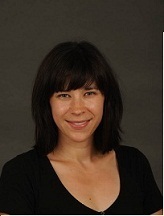From the moment they’re born, babies are highly attuned to communicate and motivated to interact. And they’re great listeners.
New research from the University of Notre Dame shows that during the first year of life, when babies spend so much time listening to language, they’re actually tracking word patterns that will support their process of word- learning that occurs between the ages of about 18 months and two years.

“Babies are constantly looking for language clues in context and sound,” says Jill Lany, assistant professor of psychology and director of Notre Dame’s baby lab, where she conducts studies on how babies acquire language.
“My research suggests that there are some surprising clues in the sound stream that may help babies learn the meanings of words. They can distinguish different kinds of words like nouns and verbs by information in that sound stream.”
Lany’s studies show that babies as young as 12 months can identify “adjacent relationships” in which a phrase or sound like “it’s a” occurs immediately before an object.

“If I were to say to you, ‘Oh look, it’s a dax,’ you might not know what a ‘dax’ is, but the cue ‘it’s a’ lets a baby know that what follows is an object,” Lany says.
Similarly, if a person were to say, “I’m daxing it,” the same principal is at work with cues and word patterns that indicate a verb or action word. Babies actually can use these patterns as clues to the meanings of new words they are learning.
By about 15 months, babies are able to track more complicated “non-adjacent relationships” in which the word cue may be even further removed.
“We often think about grammar coming after word-learning, but in fact, my research shows that all this information that babies are picking up in that first year of life about how words are occurring in their language, actually is supporting this process of word-learning prior to mastery of language.”
Contact: Jill Lany, 574-631-4524, jlany@nd.edu